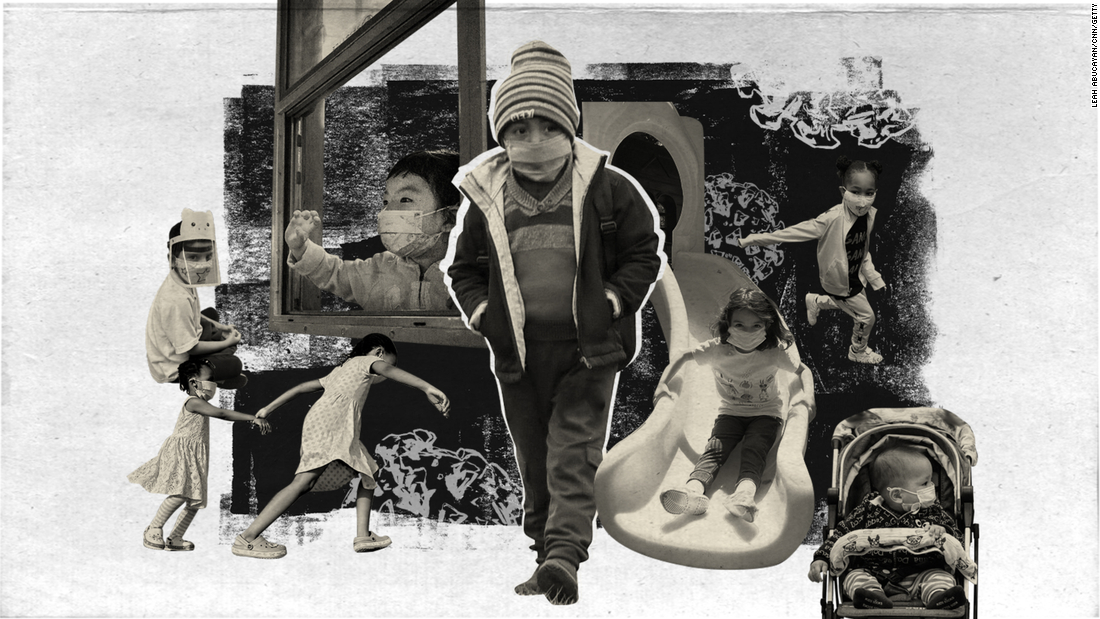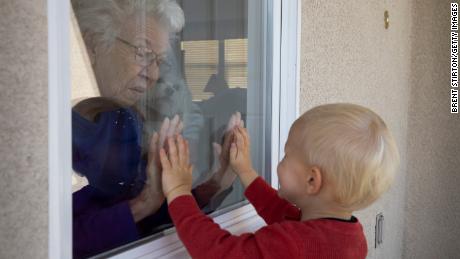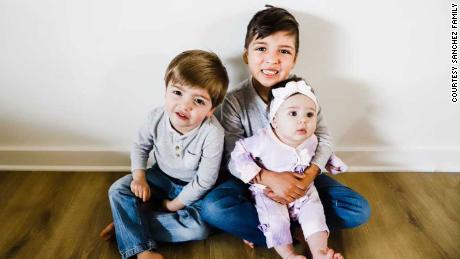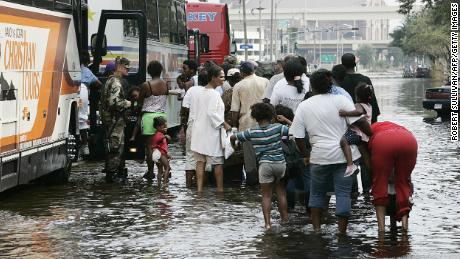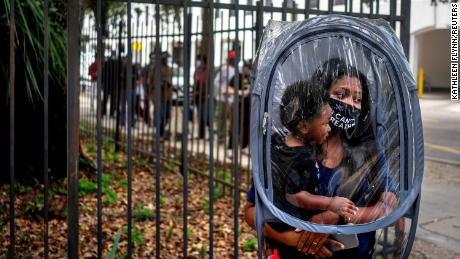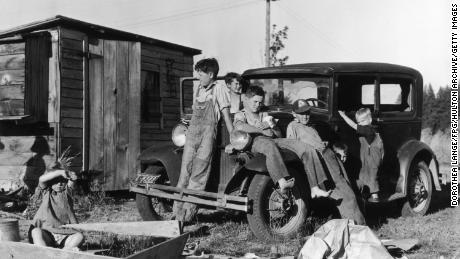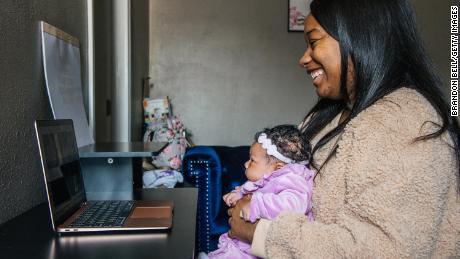Seniors were molded by the Depression and millennials by 9/11. Today’s children of ‘Gen C’ will forever be shaped by Covid-19.
It was more than just simple disappointment. It was fear that the world they once knew might have changed forever.
“I think that it’s something that’s going to kind of scar them. I don’t think that they’ll forget,” says the mom of three in Little Rock, Arkansas. “In our life, there was a before and an after this.”
The moments when it seemed like all of this could be momentary slipped away long ago. It’s no longer a question of if this pandemic will shape an entire generation. But how.
Some experts have started to use a new term to talk about seismic changes they’re seeing — changes that could cause ripple effects in children’s lives far into the future.
They’ve given a new name to the world’s newest generation: Gen C, or Generation Covid.
Who’s in Gen C?
Defining a generation isn’t easy, and sometimes the names we use change over time. Here’s how generations have been defined over the past century:
The Silent Generation: Born 1925-1945
Baby Boomers: Born 1946-1964
Generation X: Born 1965-1980
Millennials: Born 1981-1996
Gen Z: Born 1997-? (no endpoint set)
Gen C: ?*
*While some experts are using the term “Gen C” to refer to the coronavirus pandemic’s impact on children, scholars in different fields so far have different definitions of when this generation begins and ends.
“They’re going to be different,” Israel says. “They’re being defined by a completely new world.”
Asked who comprises Gen C, experts in other fields shared different guidelines with CNN.
A senior adviser at the United Nations Children’s Fund said all children should be included — especially those who’ve had points of transition in their lives disrupted. A sociology professor said college students shouldn’t be left out. A mental health expert noted children aged 7-9 are particularly vulnerable.
Everyone agreed that we need to keep a close eye on what’s happening to kids — and that children born during the pandemic and living through major developmental milestones right now are an important part of this generation.
How the world looks to this new generation’s youngest members
A baby stares wide-eyed at the camera as familiar music plays.
It’s the tune of the classic children’s song — “If You’re Happy and You Know It.” But the words in this TikTok version are different.
“If you’re a pandemic baby and you’ve been in quarantine your whole life so you get overstimulated by everything ’cause all the strangers that you see have masks on, and you’ve never really had a playdate in your life, clap your hands.”
“We were so shocked,” says Becca Straus, who shared the video of her son, Emmett, clapping as her husband, Alex, sings, but never expected it to resonate with so many people.
Emmett was born in April 2020, just weeks after schools, businesses and borders around the world started shutting down. Straus, who lives in Bellingham, Washington, says her family has been trying to teach him social skills at home and take the situation in stride. But they do wonder what will happen when children like Emmett, who’ve spent most of their lives in isolation, are suddenly exposed to the wider world.
“We’re curious how all the community of kids are going to be when they finally can get together,” she says. “They’re all going to get together in a room and wonder, ‘Who are all these kids? What do I do? How do I go up to them and play with them?'”
It’s a concern many parents of young children in Gen C have shared with CNN.
Sanchez says she worries her 3-year-old and 6-year-old sons are going to be overwhelmed when they go back to school.
“My fear, because I see it in myself, is they’re just becoming more antisocial,” she says.
But she also sees a positive side.
“My hope is they’ll be a stronger generation,” she says, “because we’ve been through a lot in a year.”
Frank Danko, a 27-year-old supermarket manager in New York, says his family spent far more time together due to the pandemic than they would have had a chance to do otherwise. That gave him a chance to have more one-on-one time with his daughter Adriana, who’s now nearly nine months old. No matter what happens next, he says, Adriana and the other members of her generation will experience it together.
“My baby, she’s going to grow up however the world is,” he says. “It’s what she knows.”
The pandemic will affect kids in different ways
We don’t know how the world will look post-pandemic. That could take months, years or even decades to discern.
But scholars say dissecting the problems of the present isn’t the only way to think about Gen C’s future. There’s also a lot we can learn from the past.
“The patterns were clear that low-income African Americans were the most exposed in Katrina, and they suffered the most protracted recovery and the worst impacts,” Peek says. “And the same thing is happening in the pandemic.”
People of color are dying and getting sick at higher rates, Peek says, and children of color are disproportionately out of school. And those inequalities, she says, need to be not only acknowledged, but also factored into recovery efforts.
“It’s too early to tell, of course, what the overall character of this generation will look like and how the mental health of this generation will be affected in the long-term,” Comer says. “But it seems that there’s not going to be a universal character or personality impact, because the burdens of these times are not shared equally.”
How this generation compares to children of the Great Depression
That’s as true now as it was nearly a century ago.
Older boys who lived through the Depression were able to find jobs and felt they had agency in the situation, Elder says, while younger boys were stuck at home and deeply affected by how their parents were handling it. They became “targets of their fathers’ frustration,” Elder says, and years later were still suffering the consequences.
Today, too, mental health experts say how parents are handling the pandemic has a big impact on children — especially younger kids.
Another important point: being exposed to a major social change doesn’t necessarily influence someone’s entire life — because whatever comes next could play an even bigger role, Elder says. Many children of the Great Depression, he notes, struggled at first, but later went on to have decorated military careers in the Korean War.
“Their military service was quite remarkable,” he says. “It had a lot to do with the fact that they had dealt with hard times and they knew how to manage a tough situation.”
The daily realities of the pandemic have become achingly clear. But we don’t know what major social events will be unfolding days or decades from now.
Technology will be a big part of Gen C’s lives. But their future isn’t set in stone
Israel, the Bank of America analyst, has been spending a lot of time thinking about what the future will look like. And he’s optimistic.
“To be honest, I really envy Gen C,” he says. “I think they’re going to live in a fascinating world.”
“The role of technology, of data creation, is going to accelerate dramatically. …They will live their life online,” he says. “They’ll get their experience in the virtual world.”
Experts who study child development and disasters say there are plenty of reasons to worry about Gen C’s future, too.
“Every age group is at risk,” Comer says, noting that he and other mental health professionals are particularly worried about what he calls the “in-betweeners” who are showing increased behavioral problems and signs of depression.
Older children have a better grasp of the situation and can better express their distress. Younger children don’t know a previous time when things were different. But Comer says many kids in the middle — who aren’t as good at articulating complicated feelings and “are still early in understanding the world” — are really struggling.
“We’re seeing 7-year-olds, 8-year-olds, 9-year-olds who already — just from enduring the past year of isolation, home schooling, being out of routines and structure and activities — are having considerably negative mental health impacts,” he says.
It’s too soon to know what that will mean down the line, Comer says, but the ripple effects will likely be seen for years to come. And another factor, he says, can’t be ignored. This disaster, unlike many others in the past, hasn’t spawned the same sort of community solidarity that can help with recovery, Comer says.
“This hardship has been marked by more unrest and more mistrust. … We’re not seeing the large-scale community cohesion that sometimes helps generations and cohorts get through some of the most difficult times,” he says.
But the situation is still unfolding. And in some ways, that’s a good thing.
“None of this is written in stone in terms of where we go from here,” Peek says.
What all of us do now will play a big role in shaping Gen C’s future.
CNN’s Alisha Ebrahimji and Janelle Davis contributed to this report.
![]()


